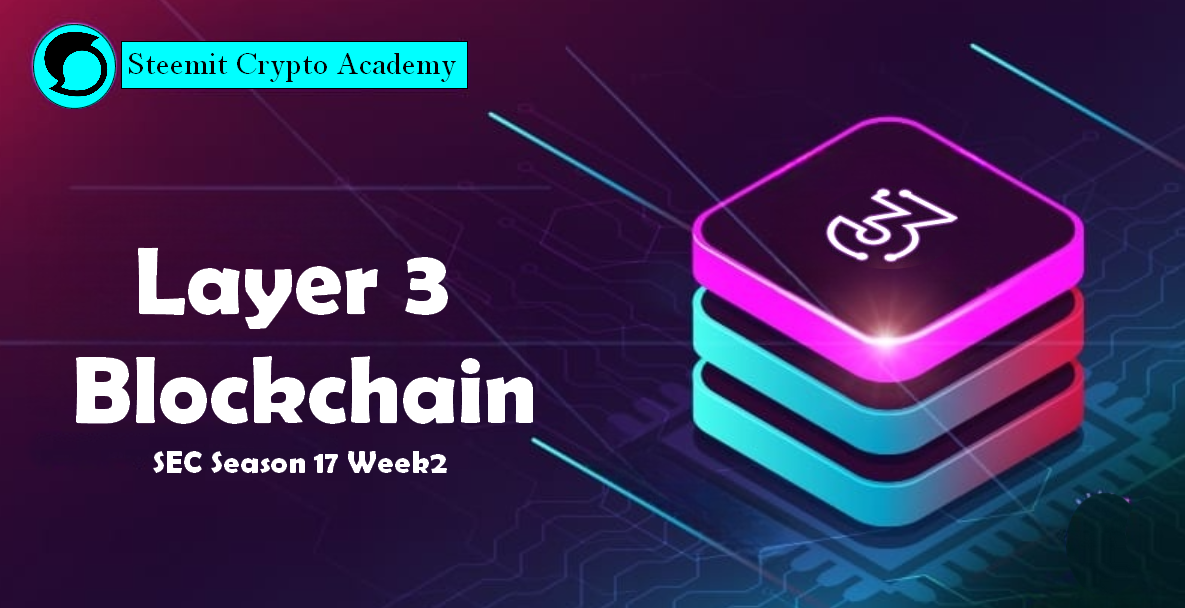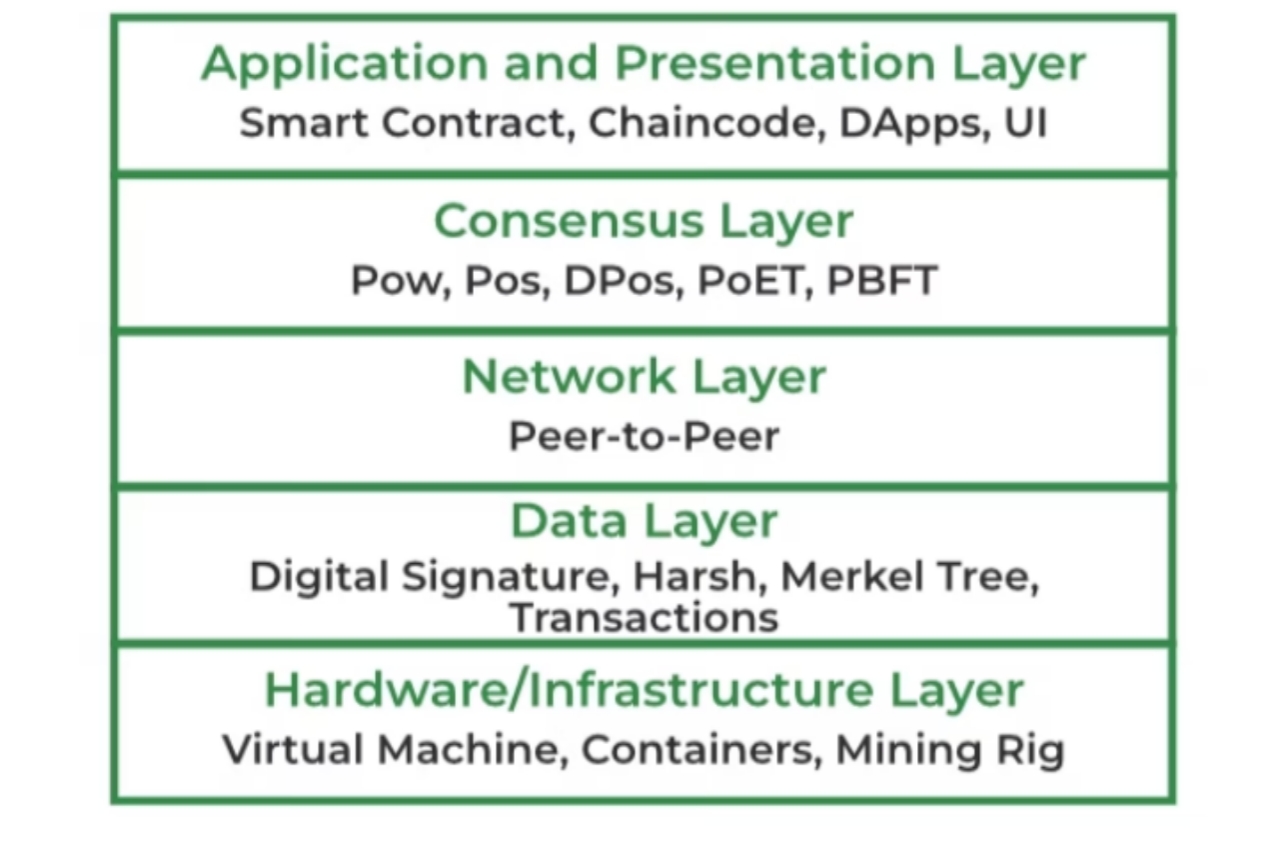
I hope you guys are doing well. My name is Zubair Ahmad and I am from Pakistan. I hope you enjoy my post and support me.
I would like to thanks to @crypto-academy for organization this contest.
I likely to invite to invite
@fantvwiki
@robin42
@memamun
to participate in this contest.
| _describe_the_architecture_of_layer_3_blockchains_specialized_in_fractal_scalability,_highlighting_the_main_components_and_mechanisms_that_achieve_this_objective._create_a_chart_that_illustrates_this_architecture."> Describe the architecture of layer 3 blockchains specialized in fractal scalability, highlighting the main components and mechanisms that achieve this objective. Create a chart that illustrates this architecture. |
|---|
Layer 3 blockchains specialized in fractal scalability have a unique architecture that allows for increased scalability and efficiency. These blockchains are designed to handle a large number of transactions by utilizing a layered approach.
At the core, there is a base layer that handles the fundamental functions of the blockchain, such as consensus and security. This layer ensures the integrity and immutability of the blockchain.
On top of the base layer, there are multiple layers that can be dynamically added or that can be removed based on the network's needs. Each layer is responsible for processing a specific subset of transactions, allowing for parallel processing and improved scalability.
Layer 3 blockchains specialized in fractal scalability have different layers that work together to handle alots of transactions quickly. Each layer processes a specific group of transactions at the same time, which makes the blockchain faster. The layers can also be divided into smaller parts, to make processing even more efficient. In this process the blockchain can handle a lot of transactions without slowing down.
Peer-to-Peer (P2P) Network
Virtual Machine
Consensus Algorithm
Node Application
Distributed/Shared Ledger

| _how_do_layer_3_blockchains_specializing_in_fractal_scalability_use_horizontal_sharding_to_improve_transaction_processing_capacity,_and_how_does_this_differ_from_the_steem_blockchain_approach?"> How do layer 3 blockchains specializing in fractal scalability use horizontal sharding to improve transaction processing capacity, and how does this differ from the Steem blockchain approach? |
|---|
Layer 3 block chain that specializing fractal scalability use horizontal sharding to improve transaction processing capacity in a very Simple way.
For better understanding I will give you example. Imagine you have a big task to complete but its too much for one person to complete alone. so you divide this big task in the small parts and assign this small task to different people. Every person work on this parts independently which make this task very fast and efficient.
In the same process horizontal sharding dividing the load of work processing transaction into small group called shards. Each shard is responsible for the specific transaction. By the process of this block chain can process more and multiple transaction at the same time which make it more faster and scalable.
The steam block chain approach is little similar because it have also sharding, but it take a different approach. Instead of dividing over load work into horizontally shard, Steemit use different method which as vertically sharding. This line means that instead of dividing the transaction among different shards, Steem assign different task to different nodes which connect to the network. Each node is responsible for their specific task.
| _explain_how_sidechains_and_rollups_are_essential_elements_of_layer_3_blockchains_to_ensure_fractal_scalability,_and_how_these_concepts_could_be_applied_to_the_steem_blockchain_to_improve_its_performance."> Explain how sidechains and rollups are essential elements of layer 3 blockchains to ensure fractal scalability, and how these concepts could be applied to the Steem blockchain to improve its performance. |
|---|
Side chain chain are separate chain which are connected to the main block chain. side chine can handle their own transaction and smart contract.Which take some of the load to the main block chain. More transaction can be process.
In rollups a multiple of transaction are together in a single and submitted in to the single transaction together to the main chain. This reduce the number of transaction that need to be process.
Now let's talk about these concepts that could be applied to the Steem block chain of Steem implement side chain, it could offload some of the transaction process to the separate chain. These would help increase scalability and can handle a large number of transaction without putting to much strain on the main chain.
| _how_do_layer_3_blockchains_handle_the_challenges_of_decentralized_governance_while_maintaining_fractal_scalability,_and_how_does_this_compare_to_the_governance_structure_of_the_steem_blockchain?"> How do Layer 3 blockchains handle the challenges of decentralized governance while maintaining fractal scalability, and how does this compare to the governance structure of the Steem blockchain? |
|---|
Layer 3 block chain tackle the challenge of decentralized governance while maintaining fractal scalability in the innovative mechanism.
In governance layer 3 block chain often employ of combination of on-chain and off-chain governance model. On chain governance allow those who hold token to participate in decision making through voting on proposal. While off chain governance allow to involved discussing and debates happening in various forums.
To maintain fractal scalability, layer 3 block chain may utilized hierarchical structure. This means that making decision is divided into different level, With Lower level decision making are specific to individuals shards while high level decision making affect the entire block chain.
Now comparing this to the governance structure of the steem block chain. Steem has a mechanic which is DPOS delegated proof of stake. In this mechanism a limited number of elected witness or member are responsible for validating transaction and governance decision making.
| _how_could_the_introduction_of_new_technologies_such_as_sharding_and_interoperable_blockchains_influence_the_future_of_layer_3_blockchains_specialized_in_fractal_scalability,_and_how_could_the_steem_blockchain_adapt_to_these_developments?"> How could the introduction of new technologies such as sharding and interoperable blockchains influence the future of layer 3 blockchains specialized in fractal scalability, and how could the Steem blockchain adapt to these developments? |
|---|
The introduction of a technologies like sharding and interoperable blockchains can have a very big impact on the future of layer 3 blockchains.
Interoperable blockchains, enable different blockchains to communicate and share information with one another. This opens up opportunities for collab and seamless integration between different layer 3 blockchains.
let talk about about how the Steem blockchain could adapt to these developments. If Steem embraces sharding, it could divide its blockchain into smaller shards, allowing for parallel processing and increased scalability. This would enable the network to handle a larger number of transactions without slowing their performance.
@xubair